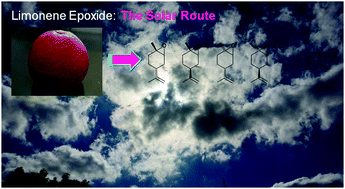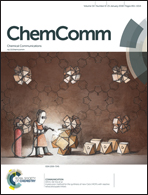Photocatalytic partial oxidation of limonene to 1,2 limonene oxide†
Abstract
The silylation of crystalline TiO2 P25, commonly used for photocatalytic degradation of pollutants, results in an exceptionally selective catalyst for the aerobic limonene epoxidation to 1,2-limonene oxide under solar light irradiation. The hypothesized mechanism involves the singlet oxygen generated through energy transfer from the excited TiO2 to adsorbed O2 molecules. The reaction product is the valued precursor of bio-based poly(limonene carbonate), a thermoplastic polymer of superior thermal and optical properties whose industrial production is in need of an efficient green synthesis of limonene oxide.



 Please wait while we load your content...
Please wait while we load your content...